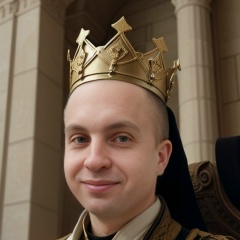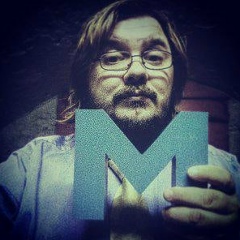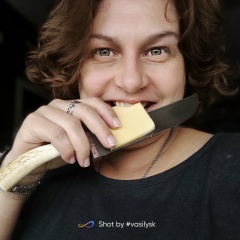Хэллоуин считается самым массовым праздником в США, не считая Рождества. Что же представляет собой этот праздник и откуда он берет свои начала? Предлагаю заглянуть на несколько тысячелетий назад...
В эпоху дохристианства, территории современной Англии и Ирландии, а также север Франции были населены кельтами. Кельтский год состоял из 2 частей - зимы и лета. В качестве верховного бога кельты чтили бога Солнца. По преданию, он в течение зимы находился в плену у повелителя мертвых - Самхэйна (Самайна).
Именно 31 октября (по нашему календарю, естественно), кельты отмечали свой самый главный праздник, который назывался Самхэйн. Празднику придавалось большое значение, так как он означал конец сбора урожая и являлся символом конца года старого и начала года нового.
Кроме того, Самхэйн - это ворота в зиму. Кельты, будучи язычниками, верили в возрождение жизни из смерти. По кельтским легендам, белая пустыня, где живет Самхэйн, необычайно красива. Согласно легенде, в эту ночь Самхэйн открывает ворота в прошлое и будущее.
С Самхэйном было связано большое число обычаев и обрядов. В этот день в Ирландии в главный город страны, Тару, собирались все воины, устраивался пир, который продолжался днем и ночью. В день Самхэйна люди тушили огонь в домах, чтобы вновь зажечь его от священного огня жрецов-друидов. Это был день, когда потревоженные духи и прочие волшебные существа могли прийти в наш мир. Поэтому кельты одевались так же, как духи, и ходили по домам, прося еду для успокоения потусторонних сил.
В Самайн устраивались разнообразные гадания. Например, молодые люди попарно бросали в огонь листья плюща, заостренный - за мужчину, а круглый - за женщину. Если на горячем воздухе листья устремлялись друг к другу - быть свадьбе, а если разлетались – быть ссоре. Часто применялись при ворожбе и гаданиях орехи. Девушка, дабы убедиться в верности своего парня, клала на решетку возле огня два ореха с именами. Если орехи сгорали вместе, все было в порядке. Если же они разлетались в стороны или не горели - это было неопровержимое свидетельство неверности парня.
В I в. н.э. римляне завоевали кельтов, однако запрещать праздник не стали - он совпадал с Днем Помоны (богини растений). Со временем Самхэйн «ассимилировался».
Христианизация Британии и Ирландии привела к отказу населения от кельтских языческих обычаев. Однако Самайн не забыли.
В IX веке Папа Григорий III перенес празднование Дня всех святых с 13 мая на 1 ноября. В то время этот день посвящали тем святым, которые не имели своего праздника в течение года. День накануне (31 октября) в староанглийском языке был назван All Hallows Even или All Hallows Eve («вечер всех святых»). Позже название трансформировалось в Hallowe'en или Halloween.
Совпадение дат языческого и христианского праздников привело к тому, что языческий праздник выжил, а нечисть кельтов превратилась в нечисть христианскую. В эпоху Средневековья и Нового времени Хэллоуин стал временем ведьмовского шабаша.
С Хэллоуином связана традиция мастерить страшные фонарики из тыкв, в которые помещали горящую свечу. Согласно легенде, его изобрел хитрый и жадный ирландский кузнец Джек, сумевший 2 раза обмануть дьявола и получить от него обещание не покушаться на собственную душу. Правда, за грехи кузнеца не пустили в Рай, и в ожидании Судного дня он должен был скитаться по Земле, освещая свой путь куском раскаленного угля, который защищался от непогоды пустой тыквиной. Отсюда и пошло название фонаря - Jack-o-lanterns.
В нынешнем виде Хэллоуин появился только в XIX веке благодаря европейским эмигрантам, которые привезли в США обычай буянить на Хэллоуин и соблюдать все праздничные суеверия. В 1920-х годах прошли празднования Хэллоуина в Нью-Йорке и Лос-Анджелесе. Стала распространяться мода устраивать на Хэллоуин всякие мелкие хулиганства - поджигать деревья, бить фонари и т.д. Популярность подобного празднования была так велика, что американские бойскауты решили пропагандировать в этот день отказ от вандализма (не отказываясь от самого праздника). Бойскаутский лозунг гласил: «Sane Halloween!» (что-то вроде «Даешь нормальный Хэллоуин!»). Хулиган
В эпоху дохристианства, территории современной Англии и Ирландии, а также север Франции были населены кельтами. Кельтский год состоял из 2 частей - зимы и лета. В качестве верховного бога кельты чтили бога Солнца. По преданию, он в течение зимы находился в плену у повелителя мертвых - Самхэйна (Самайна).
Именно 31 октября (по нашему календарю, естественно), кельты отмечали свой самый главный праздник, который назывался Самхэйн. Празднику придавалось большое значение, так как он означал конец сбора урожая и являлся символом конца года старого и начала года нового.
Кроме того, Самхэйн - это ворота в зиму. Кельты, будучи язычниками, верили в возрождение жизни из смерти. По кельтским легендам, белая пустыня, где живет Самхэйн, необычайно красива. Согласно легенде, в эту ночь Самхэйн открывает ворота в прошлое и будущее.
С Самхэйном было связано большое число обычаев и обрядов. В этот день в Ирландии в главный город страны, Тару, собирались все воины, устраивался пир, который продолжался днем и ночью. В день Самхэйна люди тушили огонь в домах, чтобы вновь зажечь его от священного огня жрецов-друидов. Это был день, когда потревоженные духи и прочие волшебные существа могли прийти в наш мир. Поэтому кельты одевались так же, как духи, и ходили по домам, прося еду для успокоения потусторонних сил.
В Самайн устраивались разнообразные гадания. Например, молодые люди попарно бросали в огонь листья плюща, заостренный - за мужчину, а круглый - за женщину. Если на горячем воздухе листья устремлялись друг к другу - быть свадьбе, а если разлетались – быть ссоре. Часто применялись при ворожбе и гаданиях орехи. Девушка, дабы убедиться в верности своего парня, клала на решетку возле огня два ореха с именами. Если орехи сгорали вместе, все было в порядке. Если же они разлетались в стороны или не горели - это было неопровержимое свидетельство неверности парня.
В I в. н.э. римляне завоевали кельтов, однако запрещать праздник не стали - он совпадал с Днем Помоны (богини растений). Со временем Самхэйн «ассимилировался».
Христианизация Британии и Ирландии привела к отказу населения от кельтских языческих обычаев. Однако Самайн не забыли.
В IX веке Папа Григорий III перенес празднование Дня всех святых с 13 мая на 1 ноября. В то время этот день посвящали тем святым, которые не имели своего праздника в течение года. День накануне (31 октября) в староанглийском языке был назван All Hallows Even или All Hallows Eve («вечер всех святых»). Позже название трансформировалось в Hallowe'en или Halloween.
Совпадение дат языческого и христианского праздников привело к тому, что языческий праздник выжил, а нечисть кельтов превратилась в нечисть христианскую. В эпоху Средневековья и Нового времени Хэллоуин стал временем ведьмовского шабаша.
С Хэллоуином связана традиция мастерить страшные фонарики из тыкв, в которые помещали горящую свечу. Согласно легенде, его изобрел хитрый и жадный ирландский кузнец Джек, сумевший 2 раза обмануть дьявола и получить от него обещание не покушаться на собственную душу. Правда, за грехи кузнеца не пустили в Рай, и в ожидании Судного дня он должен был скитаться по Земле, освещая свой путь куском раскаленного угля, который защищался от непогоды пустой тыквиной. Отсюда и пошло название фонаря - Jack-o-lanterns.
В нынешнем виде Хэллоуин появился только в XIX веке благодаря европейским эмигрантам, которые привезли в США обычай буянить на Хэллоуин и соблюдать все праздничные суеверия. В 1920-х годах прошли празднования Хэллоуина в Нью-Йорке и Лос-Анджелесе. Стала распространяться мода устраивать на Хэллоуин всякие мелкие хулиганства - поджигать деревья, бить фонари и т.д. Популярность подобного празднования была так велика, что американские бойскауты решили пропагандировать в этот день отказ от вандализма (не отказываясь от самого праздника). Бойскаутский лозунг гласил: «Sane Halloween!» (что-то вроде «Даешь нормальный Хэллоуин!»). Хулиган
Halloween is considered the most massive holiday in the United States, not counting Christmas. What is this holiday and where does it come from? I propose to look back a few millennia ...
In the era of pre-Christianity, the territories of modern England and Ireland, as well as the north of France, were inhabited by Celts. The Celtic year consisted of 2 parts - winter and summer. As the supreme god, the Celts worshiped the sun god. According to legend, during the winter he was held captive by the lord of the dead, Samhain (Samhain).
It was on October 31 (according to our calendar, of course) that the Celts celebrated their most important holiday, which was called Samhane. The holiday was given great importance, since it meant the end of the harvest and was a symbol of the end of the old year and the beginning of the new year.
In addition, Samhane is a gateway to the winter. The Celts, being pagans, believed in the rebirth of life from death. According to Celtic legends, the white desert where Samhane lives is unusually beautiful. According to legend, this night Samhane opens the gate to the past and future.
A large number of customs and rituals were associated with Samhane. On this day in Ireland, all the warriors gathered in the main city of the country, Tara, a feast was held, which lasted day and night. On Samhain's day, people extinguished the fire in the houses in order to reignite it from the sacred fire of the Druid priests. It was a day when disturbed spirits and other magical creatures could come into our world. Therefore, the Celts dressed as spirits, and went home, asking for food to calm otherworldly forces.
A variety of fortunetelling were arranged in Samhain. For example, young people threw ivy leaves into the fire in pairs, pointed - for a man, and round - for a woman. If in hot air the leaves rushed to each other - to be a wedding, and if they scattered - to be a quarrel. Often used for witchcraft and fortune telling nuts. The girl, in order to verify the loyalty of her boyfriend, put two nuts with names on the grate near the fire. If the nuts burned together, everything was in order. If they scattered to the sides or did not burn - this was irrefutable evidence of the guy’s infidelity.
In the 1st century AD the Romans conquered the Celts, but did not begin to ban the holiday - it coincided with the Day of Pomona (goddess of plants). Over time, Samhane "assimilated."
The Christianization of Britain and Ireland led to the abandonment of the population of Celtic pagan customs. However, Samhain was not forgotten.
In the IX century, Pope Gregory III postponed the celebration of All Saints Day from May 13 to November 1. At that time, this day was dedicated to those saints who did not have their holiday for a year. The day before (October 31) in Old English was called All Hallows Even or All Hallows Eve ("All Saints' Evening"). The name later transformed into Hallowe'en or Halloween.
The coincidence of the dates of the pagan and Christian holidays led to the fact that the pagan holiday survived, and the evil of the Celts turned into evil Christian. In the Middle Ages and the New Age, Halloween became the time of the witch's coven.
Halloween is associated with the tradition of crafting scary pumpkin lanterns in which a burning candle was placed. According to legend, he was invented by the cunning and greedy Irish blacksmith Jack, who managed to fool the devil 2 times and get a promise from him not to encroach on his own soul. True, the blacksmith was not allowed into Paradise for his sins, and in anticipation of the Day of Judgment he had to wander around the Earth, lighting his way with a piece of hot coal, which was protected from the weather by an empty pumpkin. Hence the name of the lantern - Jack-o-lanterns.
In its current form, Halloween only appeared in the 19th century thanks to European immigrants who brought to the USA the custom to rave on Halloween and observe all the festive superstitions. Halloween celebrations took place in the 1920s in New York and Los Angeles. The fashion began to spread on Halloween to arrange all sorts of minor hooliganism - set fire to trees, beat lanterns, etc. The popularity of such a celebration was so great that the American Boy Scouts decided to propagate on this day the rejection of vandalism (without abandoning the holiday itself). The Boy Scout slogan read: "Sane Halloween!" (something like "Give normal Halloween!"). Bully
In the era of pre-Christianity, the territories of modern England and Ireland, as well as the north of France, were inhabited by Celts. The Celtic year consisted of 2 parts - winter and summer. As the supreme god, the Celts worshiped the sun god. According to legend, during the winter he was held captive by the lord of the dead, Samhain (Samhain).
It was on October 31 (according to our calendar, of course) that the Celts celebrated their most important holiday, which was called Samhane. The holiday was given great importance, since it meant the end of the harvest and was a symbol of the end of the old year and the beginning of the new year.
In addition, Samhane is a gateway to the winter. The Celts, being pagans, believed in the rebirth of life from death. According to Celtic legends, the white desert where Samhane lives is unusually beautiful. According to legend, this night Samhane opens the gate to the past and future.
A large number of customs and rituals were associated with Samhane. On this day in Ireland, all the warriors gathered in the main city of the country, Tara, a feast was held, which lasted day and night. On Samhain's day, people extinguished the fire in the houses in order to reignite it from the sacred fire of the Druid priests. It was a day when disturbed spirits and other magical creatures could come into our world. Therefore, the Celts dressed as spirits, and went home, asking for food to calm otherworldly forces.
A variety of fortunetelling were arranged in Samhain. For example, young people threw ivy leaves into the fire in pairs, pointed - for a man, and round - for a woman. If in hot air the leaves rushed to each other - to be a wedding, and if they scattered - to be a quarrel. Often used for witchcraft and fortune telling nuts. The girl, in order to verify the loyalty of her boyfriend, put two nuts with names on the grate near the fire. If the nuts burned together, everything was in order. If they scattered to the sides or did not burn - this was irrefutable evidence of the guy’s infidelity.
In the 1st century AD the Romans conquered the Celts, but did not begin to ban the holiday - it coincided with the Day of Pomona (goddess of plants). Over time, Samhane "assimilated."
The Christianization of Britain and Ireland led to the abandonment of the population of Celtic pagan customs. However, Samhain was not forgotten.
In the IX century, Pope Gregory III postponed the celebration of All Saints Day from May 13 to November 1. At that time, this day was dedicated to those saints who did not have their holiday for a year. The day before (October 31) in Old English was called All Hallows Even or All Hallows Eve ("All Saints' Evening"). The name later transformed into Hallowe'en or Halloween.
The coincidence of the dates of the pagan and Christian holidays led to the fact that the pagan holiday survived, and the evil of the Celts turned into evil Christian. In the Middle Ages and the New Age, Halloween became the time of the witch's coven.
Halloween is associated with the tradition of crafting scary pumpkin lanterns in which a burning candle was placed. According to legend, he was invented by the cunning and greedy Irish blacksmith Jack, who managed to fool the devil 2 times and get a promise from him not to encroach on his own soul. True, the blacksmith was not allowed into Paradise for his sins, and in anticipation of the Day of Judgment he had to wander around the Earth, lighting his way with a piece of hot coal, which was protected from the weather by an empty pumpkin. Hence the name of the lantern - Jack-o-lanterns.
In its current form, Halloween only appeared in the 19th century thanks to European immigrants who brought to the USA the custom to rave on Halloween and observe all the festive superstitions. Halloween celebrations took place in the 1920s in New York and Los Angeles. The fashion began to spread on Halloween to arrange all sorts of minor hooliganism - set fire to trees, beat lanterns, etc. The popularity of such a celebration was so great that the American Boy Scouts decided to propagate on this day the rejection of vandalism (without abandoning the holiday itself). The Boy Scout slogan read: "Sane Halloween!" (something like "Give normal Halloween!"). Bully
У записи 1 лайков,
0 репостов.
0 репостов.
Эту запись оставил(а) на своей стене Владислав Яколин






















